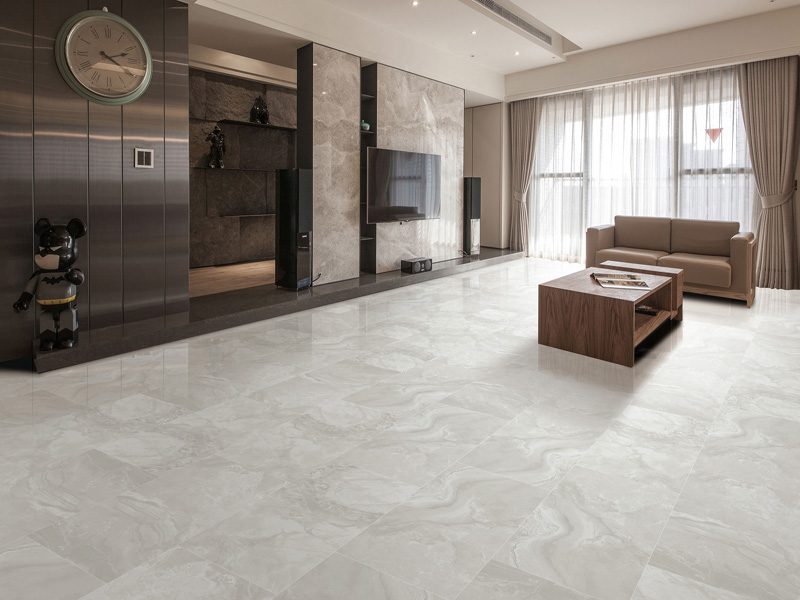
Is there a wall tile also be used as floor tile? Is there a basic black or white tile that can make a dramatic enough difference to a room? Is there a tile that affordable enough for extensive installations but also durable for long-lasting style?
In general, there are two rating systems used to classify a tile, and whether or not the tiles are intended for wall or floor use depend on their ratings.
The first rating system is called the Coefficient of Friction (COF) rating. Ceramic Floor tiles need to have a certain level of friction to make them safe to walk on without slipping. This is called a COF, and higher COF ratings represent tile that has higher levels of friction. Wall tile doesn't need to have high friction because no one will be walking on it, so it isn't a health hazard.
The second is the Porcelain Enamel Institute (PEI) rating. This is a rating of the durability and hardness of a tile. Class 1 tiles are meant for areas that have no foot traffic and Class 5 tiles are intended for locations that have a lot of people passing through and stepping on them. As a Class 4 tile, it also is durable enough to withstand both heavy foot traffic and things being dropped onto the floor. Because of this, it makes for the perfect floor tile. Since virtually any tile can be used for kitchen backsplash tile, it is also a completely viable wall tile option.
The first reason that the tile is a good choice is that it's made from one of the most durable materials on the market. Porcelain is one of the longest-lasting materials for both backsplash and floor tile because it is resistant to staining, fading, and yellowing. It also is unlikely to become scratched or dented when things drop on it.
Porcelain tile is even resistant to extreme situations like fires. It doesn't frost over in the wintertime, either, which ensures that it's always safe to walk on.

On another note, porcelain tile is really easy to clean and maintain. You don't need to wax or seal it as you would need to do to hardwood flooring. All you'll need it to clean it with a damp mop once a week or so. It takes only about 10-20 minutes and makes your room look sparkling clean!
Essentially, the answer lies in the role of contrast in interior design. Black or white flooring or backsplash designs contrast with each other, which makes them perfect for mixing and matching. They also contrast with every other piece of furniture in your space as well as your accessories, rugs, towels, and lighting. Since monochromatic color schemes are en vogue, this is an awesome way to go.
White and black tiles also convey a clean and orderly look. While mixing and matching is great, a single color (either black or white) is extremely clean-looking when used as the primary color in the room.
Super white is an all-white porcelain tile variety that consists of cream rectangular tiles with ivory cracks between them. White tile makes any space brighter not only because it's bright itself, but also because it reflects light around the room. This effect is increased with white glossy finished white tile.
Because of this, Super White tile is perfect for those who want to enhance the natural or artificial lighting in their room. This makes the space appear both larger and cleaner, and it's great for people who have other white features in their kitchen or bathroom including countertops and cabinets. White tile also looks great when used with bright hues. It will go perfectly with your favorite sky-blue rug or cherry-red towels. On the other hand, Super Black is a jet-black tile with white cracks between each one. Unlike Super White, the tiles for this option are square rather than rectangular.
Copyright © 2021 Guangzhou Weyes Network Technology Co., Ltd. | All Rights Reserved